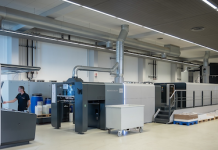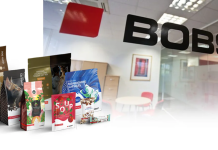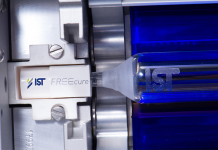In the book industry, digital print (or non-offset print reproduction) has been embraced by technologists and visionaries and is now being adopted by the mainstream print production industry. Therefore, it is critically important to understand how to implement digital, on-demand printing, as it can disrupt adjacent cost and profit centres, like finishing, inventory management, resale channels, fulfilment, and customer relations.
Where did it all start?
Digital printing itself is actually a by-product of a much larger shift in consumer behaviour. The Internet-driven demand for personalised, customised content or at least content aimed at smaller and smaller interest groups has changed the expectations of consumers who prefer their media content in book form. Readers want what they want, when and where and how they want it. This is the beginning of a mass customisation focus for publishing, and it’s only going to increase.
The growing demand for more narrowly-focused books has led to a quest for affordable ‘run of one’ book printing. The economies of scale in offset production made extremely low press runs impractical outside the realm of expensive vanity projects. Digital, on the other hand, promises little or no make-ready overheads. In theory, digitally printing a book could be as easy as making a photocopy. Of course, a printer’s profitability ultimately depends on volume, so there must also be practical ways to combine thousands or millions of very short runs, and produce them at a sufficiently high quality to meet consumer expectations.
The expectations of e-commerce have heavily influenced this trend. Not only can books be ordered online and delivered overnight; they can also, in principle, be highly customised, thanks to innovations like variable data printing (VDP) and custom content aggregation. In higher education, for example, professors may specify custom, bound course packs, creating a unique textbook for a class of 20 or 30 students. On the consumer level, photobooks and other highly personalised books are becoming commonplace. While mass customisation is still far from universal, at least for now, the expectations of book e-commerce (‘I want my book, and I want it now’) are wreaking havoc with traditional sales channels.
High-speed inkjet in particular is shaping up to be an even greater disruption than electrophotographic or EP (toner) reproduction, as the optical density and quality of inks and the number of available substrates increases dramatically. With the quality improvements in inkjet technology, inks, and papers, there are more and more books of the ‘coffee table’ variety that look just as good to consumers when done with inkjet as they did with offset; it’s just a different way of doing the same thing. ‘Overcome’ is the wrong word for dealing with this kind of disruptive technology, rather it needs to be ’embraced’.
Different thresholds
Not every book publishing market has reached the digital print tipping point, nor is the switch from offset to digital universal under all conditions. In the trade market, both EP and inkjet have achieved widespread acceptance, but only for certain quantities and total run lengths. From a financial perspective, printing a large number of trade books is still more cost-effective on offset than it is on inkjet; there is a break-even point, today it’s around 5000 copies. Above that, offset is still the better choice. For example, for a book you expect will sell well, the tried-and-true offset approach is still best. So, for the first run of, let’s say, 100 000 copies, and probably the second run, you’re better off using offset. However, for the shorter third or fourth runs, inkjet is more cost effective.
Other types of book publishing have different thresholds for widespread adoption of digital print. The educational market has been increasingly using EP for its specialised, shorter-run titles, particularly where the content includes a high percentage of colour. With the rapid rate of improvement for both EP and inkjet substrates, inks, and colour management tools, education and other nonfiction publishers with typically shorter runs and high quality expectations are expected to migrate towards digital.
The rise of ebooks in the trade segment (and of integrated learning systems in the education segment) has also impacted the migration from offset to digital. Wherever ebooks and print have combined in some way, as opposed to one replacing the other the ability to digitally manufacture the printed components has become paramount. Keep in mind that, since the advent of desktop publishing in the 1980s, almost all books are ‘born digital’. Printing is simply one of several output options.





















